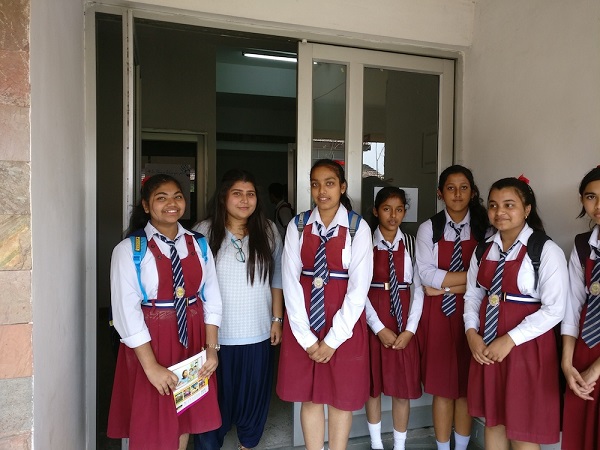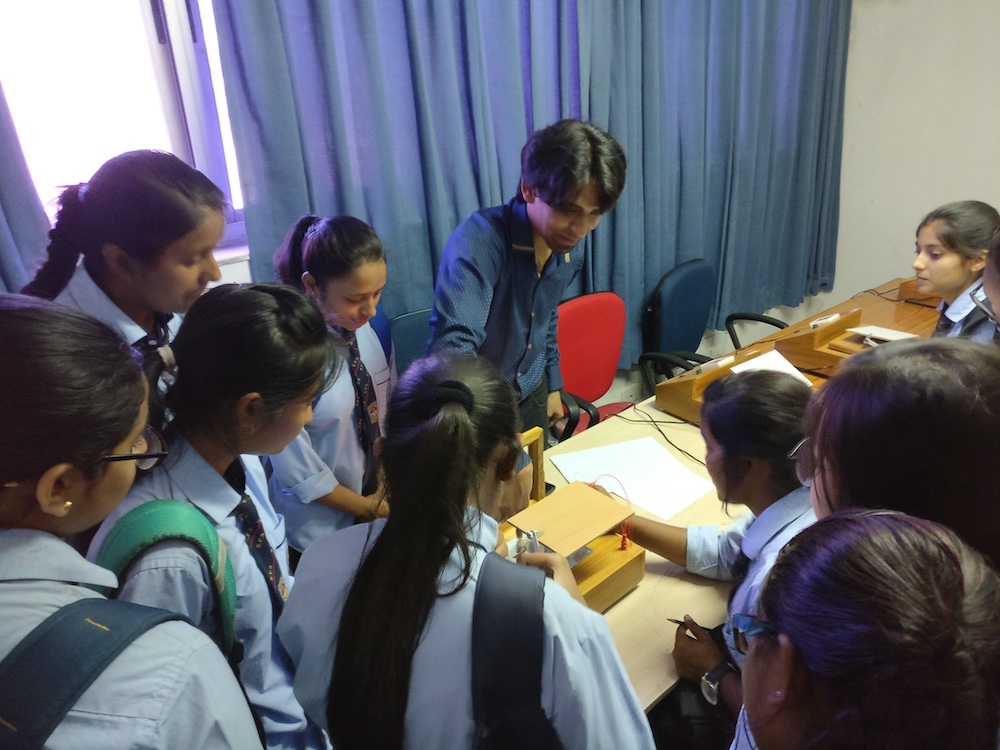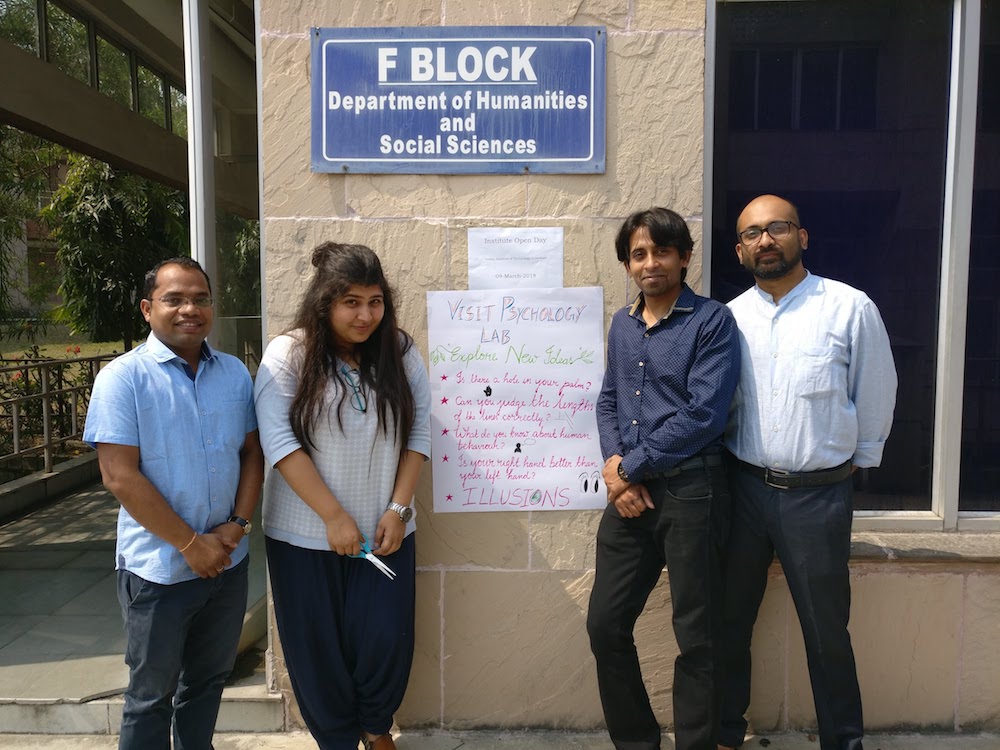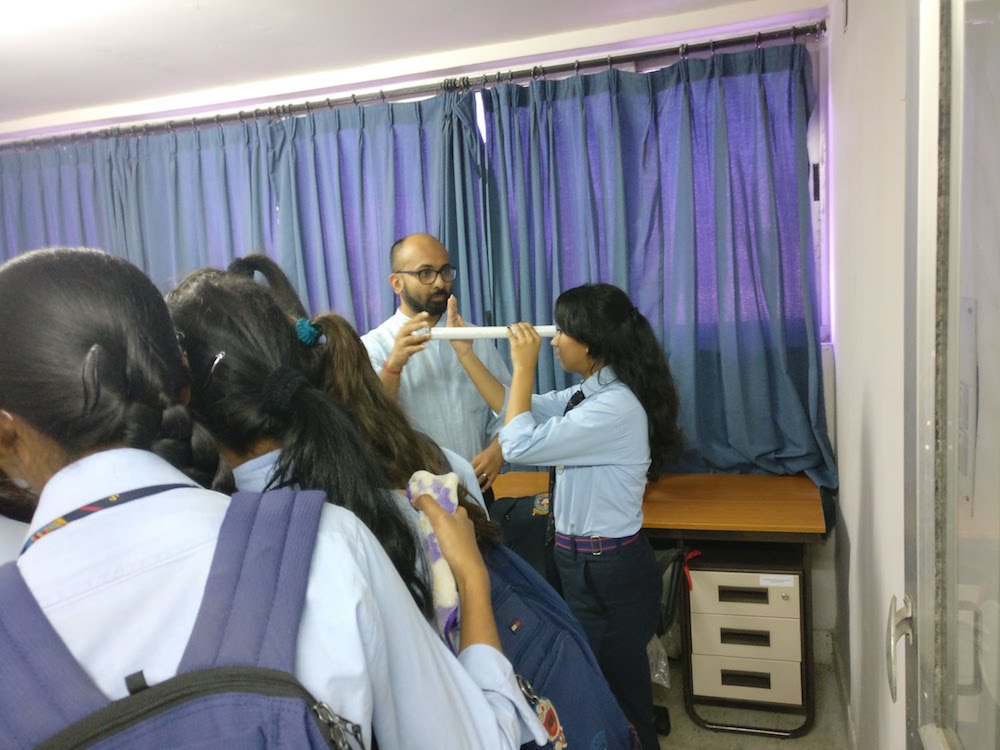Date : 09-March-2018
On the occasion of Institute Open Day – 9 March 2018, the Psychology and Sleep & Cognition Lab opened its doors for the public and upheld the tradition of communicating important and intriguing concepts in the field of Psychology to students and faculty members from different educational institutes. Around 150 students from various schools visited the Psychology and Sleep & Cognition lab. They were given a physical tour of the Lab and were made acquainted with the psychological apparatus and instruments present in the Lab. It was heartening to see the enthusiasm and the curiosity of students regarding the academic field of Psychology and its various applications. To further establish an interest in the discipline, the research scholars and the faculty members together devised interesting exercises and experiments. A few are described below:
- Do you have a hole in your palm?
By looking through a cardboard tube or rolled up piece of paper with one eye and looking at one hand with the other, it is possible to create the illusion that the hand has a hole through the middle. It occurs due to a mechanism known as binocular rivalry, where the brain is forced to 'choose' to make one of the eyes more dominant as it can't match the signals it receives from them
- What are illusions?
Certain illusions were displayed to show how they distort our perceptual ordering of objects, events etc. For example, using an optical illusion of size perception called Ebbinghaus illusion. The illusion rests on the fact that the visual-attention system uses context to determine the size of objects. A center circle is perceived small by comparison if it is surrounded by larger circles than when it is surrounded by smaller circles, making it seem big.
- Is your right hand stronger than your left hand?
An activity involving a mirror drawing apparatus was utilized to demonstrate a bilateral transfer of training. Bilateral transfer of training is practicing an activity with a particular part of the body usually facilitates performance by same activity with the other part of the body. Through an estimation of speed and errors, students were made to practice drawing a star pattern by looking in the mirror using their preferred hand and then performing the same activity using their non-preferred hand.
Enthusiasm of the school children can be seen in some of the photographs clicked on that occasion.



